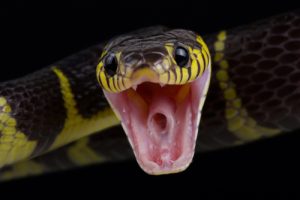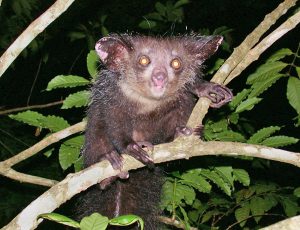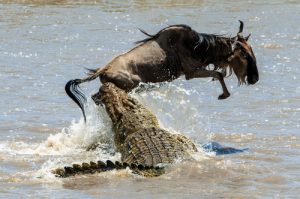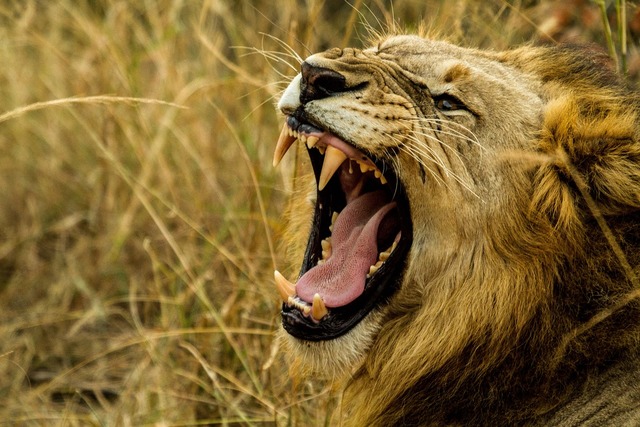
Unlikely as it may seem, man’s deadliest adversary from the animal kingdom is the tiny mosquito. They are estimated to kill up to 1 million people every year throughout the tropical regions of the world. The victims die after being bitten by the insect, which can transmit such deadly diseases as malaria, dengue fever, Zika virus and West Nile virus.
The most dangerous mammal that homo sapiens face across the planet is man himself. At present, homicides are estimated to account for almost 500,000 human deaths per year. Discounting the human factor, here’s a brief account of the five most dangerous land animals that we are likely to encounter:
Elephants
500 deaths per year
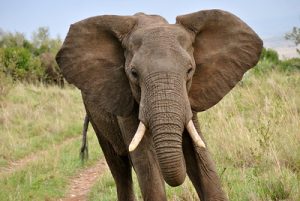
Photo credit: Flickr/CC BY-NC 2.0
Weighing up to 8 tonnes, the elephant is the world’s largest land animal. The three extant species are the African bush elephant, the African forest elephant and the Asian elephant. We tend to think of elephants as gentle creatures but they can become extremely aggressive in certain circumstances. For instance, bulls become combative during the mating season, while females can become hostile if their calves are present. Moreover, all elephants become violent, if sick, injured, or harassed. However, it is the elephant’s sheer size and weight that makes it such a danger to humans.
A paradox is while the number of elephants in the wild is decreasing, incidents of elephant-to-human contact are increasing. Consequently, reports of conflict between the two parties is also on the rise. Fragmentation and loss of the elephant’s habitat due to the rapid expansion of agriculture are primarily blamed for the situation. Groups of elephants will often approach farmlands and villages in search of food. In these situations, elephants will gore or trample anyone who gets in their way. Around 500 people are known to die each year from conflict with elephants.
Hippos
500++ deaths per year
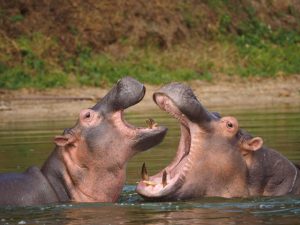
Photo credit: Pexels/PDM 1
The hippopotamus is a large semi-aquatic mammal native to sub-Saharan Africa. Its name, often shortened to ‘hippo’, is taken from Greek, translating as ‘river horse’. The lumbering colossus might not exactly look like a picture of sporting prowess but it is capable of a speed up to 45 kph (28 mph). That’s about the maximum speed Usain Bolt achieved in his 2009 world-record-breaking 100 m sprint.
A large male hippo can weigh close to 2 tonnes and have a bite force up to three times that of a lion. Combining the hippo’s immense size with its huge mouth and razor-sharp teeth, it is a formidable beast. Aggressive and fiercely territorial, the hippo has a penchant for attacking and capsizing boats. It is thought hippos are responsible for at least 500 human deaths per year, though unconfirmed reports claim the toll is much higher.
Crocodilians
1,000 deaths per year
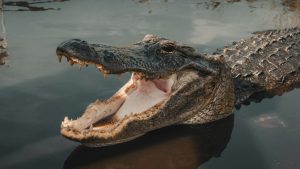
Photo credit: Creative Commons/CC BY-NC 4.0
The term ‘crocodilian’ encompasses crocodiles, alligators, caimans, and gharials. The large predatory reptiles are mostly nocturnal animals and spend most of their time in the water. However, some species also make journeys of several kilometres over land. The range of the crocodilian stretches across the Americas, Africa, Asia, and Australia. The largest and most dangerous crocodilian is the salt-water crocodile. It can be found in eastern India, Southeast Asia, and northern Australia. The species can grow to well over 6 m in length.
Predictably, most crocodile attacks on humans occur where large crocodilians live close to people populations. It is estimated that around 1,000 people are killed each year by these lethal reptiles. Most of the fatal attacks are carried out by just two species: the salt-water crocodile and the Nile crocodile. However, several other species like the mugger crocodile, black caiman and American alligator also claim several human victims, annually.
Dogs
35,000 deaths per year

Photo credit: Flickr/CC BY 2.0 DEED
The dog (Canis lupus familiarise) is a descendant of an extinct species of grey wolf. It was first domesticated more than 15,000 years ago. Now, there are more than 400 globally recognised breeds, making the dog the world’s most heterogeneous mammal. The world’s heaviest dog ever recorded, an English mastiff, weighed a massive 156 kg (343 lb). Conversely, the world’s smallest dog, the chihuahua, can be as little as 100 mm (4″) high and weigh 1 kg.
Such is the relationship between man and the domestic dog that the phrase “Man’s best friend” has entered into everyday language. Thus, it might be surprising to learn that dogs kill as many as 35,000 humans every year. Most of these deaths occur in the developing world where feral dogs are prevalent However, the statistic is not all it seems, since only a small number of people die from the actual dog attack. The vast majority of deaths occur after the victim becomes infected with the rabies virus as a result of being bitten.
Snakes
140,000 deaths per year
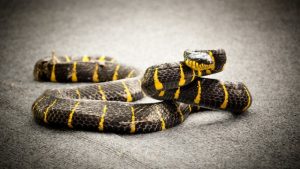
Photo credit: PICRYL/PDM 1.0
Snakes are greatly diverse, limbless, carnivorous reptiles, distinguished by greatly elongated bodies. Found on every continent except Antarctica, there are more than 3,400 extant species of snake on the planet. The reticulated python, recognised as the world’s longest snake can grow to over 7.5 m (25 ft). At the other end of the scale, the tiny Barbados threadsnake grows to only 10 cm (4″) when fully mature.
While all snakes are predators, only about 300 species are venomous. About 50% of these are lethal to humans. Worldwide, there are estimated to be up to 140,000 human deaths per year due to snakebites. As many as a further 400,000 snake attack survivors are left with a permanent serious disability on an annual basis. The vast majority of snake bite deaths occur in the Indian sub-continent and Central Africa.
Header image credit: PICRYL/PDM 1.0
